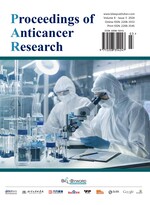Abstract
Objective: To observe the clinical efficacy and differences of the Zhuyu Juanbi formula delivered through ultrasound at Zusanli on patients with chemotherapy-induced peripheral neuropathy (CIPN) due to paclitaxel injection. Methods: A total of 72 breast cancer patients with CIPN were randomly divided into two groups. The treatment group (36 cases) was treated with oral methylcobalamin plus ultrasonic medicine permeating Zhuyu Juanbi formulae, while the control group (36 cases) was treated with oral methylcobalamin alone. Following two 2 cycles of continuous treatment, the efficacy of peripheral neurotoxicity, TCM syndrome score, FACT/GOG-Ntx score, total neuropathy score, and safety indicators of gynecological cancer patients were observed in the two groups. Result: In the treatment of CIPN, the addition of ultrasonic medicine permeating Zhuyu Juanbi formulae was more effective than oral methylcobalamin alone in reducing peripheral neurotoxicity and improving the quality of life of patients. The difference between the two groups was statistically significant (P < 0.05), and ultrasound drug penetration Zhuyu Juanbi formulae significantly reduced the FACT/GOG-Ntx score and TNS score in the treatment group. In terms of drug safety, it rarely caused adverse reactions such as grade 3 and 4 leukopenia, and the safety profile was therefore good. Conclusion: The combination of ultrasonic medicine permeating Zhuyu Juanbi formulae and methylcobalamin has been demonstrated to be an effective treatment for peripheral neurotoxicity in patients with PIPN. It has been shown to significantly improve the clinical symptoms of PIPN patients, improve the quality of life of patients, and have a good safety profile.
References
Cao W, Wei G, Li L, et al., 2019, Therapeutic Progress of Chemotherapy-Associated Peripheral Neurotoxicity and Strategies for Prevention and Treatment with Traditional Chinese Medicine. World Science and Technology: Modernization of Traditional Chinese Medicine, 21(7): 1458–1466.
Zis P, Paladini A, Piroli A, et al., 2017, Pain as a First Manifestation of Paraneoplastic Neuropathies: A Systematic Review and Meta-Analysis. Pain Ther, 6(2): 143–151. https://doi.org/10.1007/s40122-017-0076-3
Brozou V, Vadalouca A, Zis P, 2018, Pain in Platin-Induced Neuropathies: A Systematic Review and Meta-Analysis. Pain Ther, 7(1): 105–119. https://doi.org/10.1007/s40122-017-0092-3
Loprinzi CL, Lacchetti C, Bleeker J, et al., 2020, Prevention and Management of Chemotherapy-Induced Peripheral Neuropathy in Survivors of Adult Cancers: ASCO Guideline Update. J Clin Oncol, 38(28): 3325–3348. https://doi.org/10.1200/JCO.20.01399
Lan Y, Fang B, Jiang J, et al., 2021, Effect of Ultrasound Electroconductive Drug Infiltration Therapy Combined with Methylcobalamin Tablets on Pain in Multiple Myeloma Chemotherapy Patients. Guangdong Medicine, 42(2): 202–205.
Ma F, Liu M, Wang J, et al., 2020, Expert Consensus on Standardized Management of Paclitaxel-Related Peripheral Neuropathy. Chinese Journal of Frontiers of Medicine (Electronic Edition), 12(3): 41–51.
Pang Y, Chen C, Wang C, et al., 2022, Systematic Evaluation of the Safety of Albumin-Bound Paclitaxel in Breast Cancer Patients. Shanghai Medicine, 43(5): 11–23.
Sun Y, Sun B, Jia Y, 2020, Experience of Professor Jia Yingjie in Treating Blood Stasis in Malignant Tumors. Journal of Tianjin University of Traditional Chinese Medicine, 39(2): 135–137.
Wang T, Li H, Su Q, et al., 2020, Effect of Ultrasonic Infiltration of Gastroenterology Tablets on Defecation in Elderly Patients After Total Hip Arthroplasty. Journal of Practical Medicine, 37(1): 72–74 + 79.
Hu N, Zhang X, 2021, Progress in the Study of Chemical Composition and Pharmacological Effects of Astragalus. Chinese Medicine Information, 38(1): 76–82.
